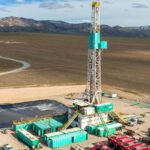The Department of Energy on Thursday announced up to $338 million in Recovery Act funding for the exploration and development of new geothermal fields and research into advanced geothermal technologies. The grants, which will be matched more than one-for-one with an additional $353 million in private and nonfederal cost-share funds, back 123 projects in 39 states.
The DOE has been pushing development of conventional and unconventional geothermal technologies because of their renewable appeal and relatively benign environmental impact. A 2008 assessment from the Department of Interior’s U.S. Geological Survey shows that the U.S. has an estimated 9,057 MW of power generation potential from domestic, conventional, identified geothermal systems, and 30,033 MW of power generation potential from conventional, undiscovered geothermal resources. The federal body said that power generation potential is greatest—up to 517,800 MW—from unconventional enhanced geothermal systems (EGS), which harness energy from high-temperature rocks with low permeability
The grants announced on Thursday will be directed toward identifying and developing new geothermal fields and reducing the upfront risk associated with geothermal development through innovative exploration and drilling projects and data development and collection. They will also support the deployment and creative financing approaches for ground source heat pump demonstration projects across the country.
Of the 123 projects (PDF), the winner of the biggest single DOE grant, $25 million, was California-based startup company AltaRock Energy Inc., which is looking to demonstrate EGS technology to generate power from the Newberry Known Geothermal Resource Area in Oregon. Other large grants went to the Arizona State Geological Survey, which will use $17.8 million in collaboration with 40 other State Geologic surveys to participate in populating the National Geothermal Data System (NGDS) with relevant, state-specific geothermal data. The NGDS will become the data system for DOE’s geothermal energy program nationally.
The projects selected for negotiation of awards fall into six categories:
• Innovative Exploration and Drilling Projects (up to $98.1 million): Twenty-four projects have been selected focusing on the development of new geothermal fields using innovative sensing, exploration, and well-drilling technologies.
• Coproduced, Geopressured, and Low Temperature Projects (up to $20.7 million): Eleven projects have been selected for the development of new low-temperature geothermal fields, a vast but currently untapped set of geothermal resources. This includes geothermal heat found in the hundreds of thousands of oil and gas wells around the U.S., where up to ten barrels of hot water are produced for every barrel of oil.
• Enhanced Geothermal Systems Demonstrations (up to $51.4 million): Three projects have been selected for the exploration, drilling and development of enhanced geothermal systems (EGS) to validate power production from deep hot rock resources using innovative technologies and approaches.
• Enhanced Geothermal Systems Components Research and Development / Analysis (up to $81.5 million): Forty-five projects have been selected to focus on research and development of new technologies to find and drill into deep hot rock formations, stimulate enhanced geothermal reservoirs, and convert the heat to power.
• Geothermal Data Development, Collection and Maintenance (up to $24.6 million): Three projects have been selected for the population of a comprehensive nationwide geothermal resource database to help identify and assess new fields.
• Ground Source Heat Pump Demonstrations (up to $61.9 million): Thirty-seven projects have been selected to demonstrate the deployment of ground source heat pumps for heating and cooling of a variety of buildings for a variety of customer types, including academic institutions, local governments and commercial buildings.
Watch for a feature on enhanced geothermal systems in the Dec. issue of POWER.
Source: DOE









